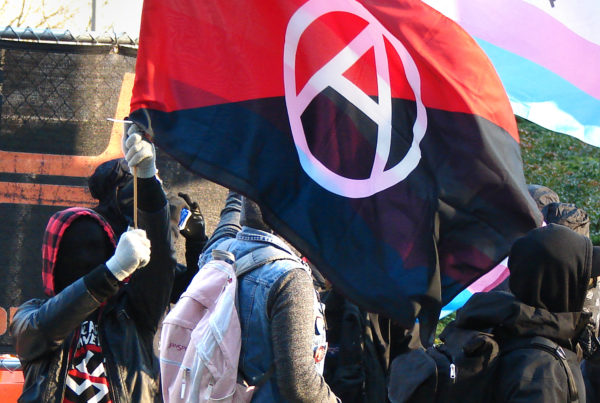Alternative Names:
Al-Ittihad Al-Islamiya; Al-Ittihad Al-Islami; Islamic Union; Islamic Unity
Location:
Somalia, some activity in Ethiopia, Kenya and Djibouti
Leadership:
Sheikh Ali Warsame is the founder of the organization, and is said to have begun in 1984 but it unclear when or if he has stopped being involved with the organization. Warsame is said to have recruited Sheikh Hassan Aweys in 1991, who took over as head of the military wing of AIAI. Aweys began to recruit members of his Hawiye sub-clan to join the group including ones with strong ties to Al Qaida.
One of these men Hassan Abdullah Hersi al-Turki used his affiliation to Al Qaida in order to aid in the arrangements for the United States Embassy attacks in Nairobi, Kenya, executed in August 1998. In addition, Al Afghani had strong ties to Al Qaida and was one of the first founders of AIAI’s affiliated cells.
Hassan Abdullah Hersi al-Turki was a prominent figure and faction leader, although it is unclear when he took on this role.
Al Afghani and Abubakar al Seyli’I were AIAI military commanders.
Membership:
Was at one stage estimated to be at some 2,000 members, plus additional reserve militias. It is largely believed to be disbanded currently.
Funding Sources:
AIAI receives funds through its criminal and business activities inside and outside of Somalia. This has included taxation of the port in Bosasso as well as providing protection in some areas.
Additonally, AIAI receives funds from Middle East financiers like Al Qaida, diaspora communities abroad, and the delivery of weapons from Sudan. The foreign investors are the largest financial contributor to the group.
Origins:
AIAI began as a nationalist organizations dedicated to the removal of dictator Siad Barre with the end goal of creating an Islamic state in its place. The group formed in a meeting in 1984, where two groups; al-Jama’a al-Islamiya and Wahdat al-Shabab al-Islam joined together. The group gained prominence in the early 1990s follow the collapse of the regime.
Major Attacks:
1993: AIAI assisted by Al Qaida carried out an attack on US soldiers in Operation Restore Hope. (18 killed)
1996: claimed responsibility for bomb attacks in hotels in Addis Ababa, Ethiopia and in Dire Dawa. (4 killed, 20 wounded)
July 1996: attempted to assassinate Ethiopia’s Minister of Transport, a Somali and the Chairman of ESDL. (0 killed)
1998: responsible for the kidnapping of 8 Red Cross workers and 2 pilots. The group demanded a ransom and then released the hostages. (0 killed)
August 7, 1998: supported Al Qaeda in the bombings of US embassies in Kenya and Tanzania. (230 killed, 4000 wounded)
August 21, 1999: detonated a mine under a train carrying 400 Dijibouti passengers. The blasts destroyed a locomotive, caused great damage to the railway line, shutting it down for four days. (0 killed, 2 wounded)
November 30, 2002: suspected of carrying out twin attacks on Israeli targets in Mombasa, Kenya. An Israeli-owned hotel was attacked along with two missiles fired at an Israeli jet that took off from the airport. (15 killed, 80 wounded)
May 3, 2005: Suspected members of AIAI and Takfir W’al Hijra bombed a stadium in Mogadishu, where then Prime Minister Mohamed Ali Gedi was giving a speech. (15 killed, 40 wounded)
Ideological Roots:
AIAI is an Islamist extremist group formed in the 1980s. Their ideology is very similar to those of Al Qaida, which is reported to be an affiliate of the group. The group contends that Islam could solve all of Somalia’s problems and has aimed to instil that will in others.
The group amalgamated views of its predecessor groups; al Jama’a al-Islamiya and Wahdat al-Shabab al-Islam. Ultimately its roots were in the regime change of Barre and to create a Shariah-based government that condemned Sufi practices.
The AIAI has been accused of having a strong affiliation with Al Qaida, the connection was established in 1994 following financial support being given by Osama Bin Laden.
Objectives:
The original objective was the removal of Barre’s regime and to institute an Islamic state in Somalia. A secondary objective was to force secession of the Ogeden region of Ethiopia.
Tactics:
AIAI’s tactics have largely been based in the use of firearms, explosives and insurgent style attacks on Ethiopian forces and Somali factions. The group is responsible for a series of bombings, shootings, and kidnappings.
AIAI’s repeated attacks lead Ethiopia to retaliate, progressively weakening the group. Since 1997 the group has largely disbanded, becoming highly decentralized. It is thought to have been responsible for attacks as recently as 2005, but it is unclear to what extent these dispersed groups are affiliated with AIAI command.
Updated on November 20, 2015.







